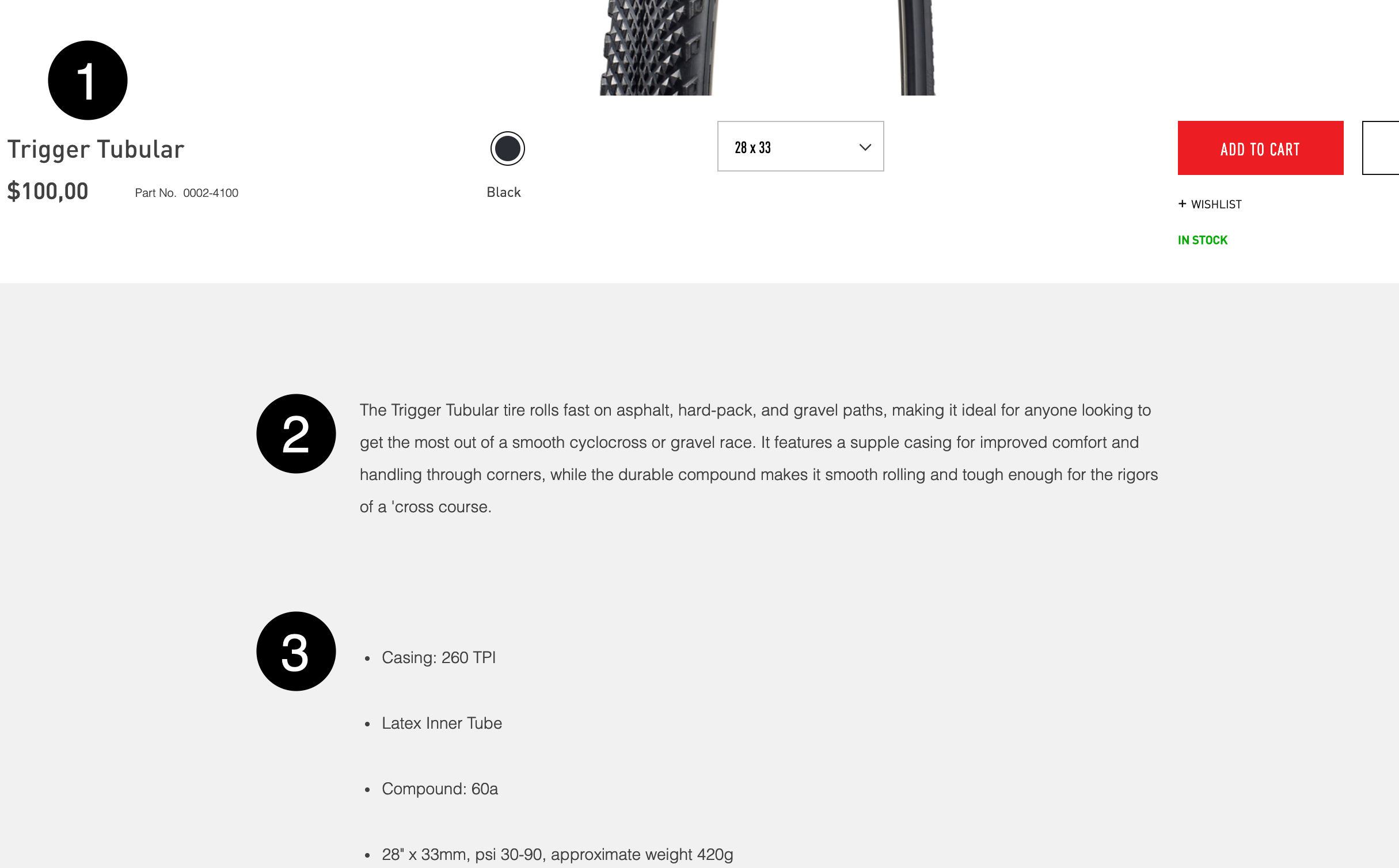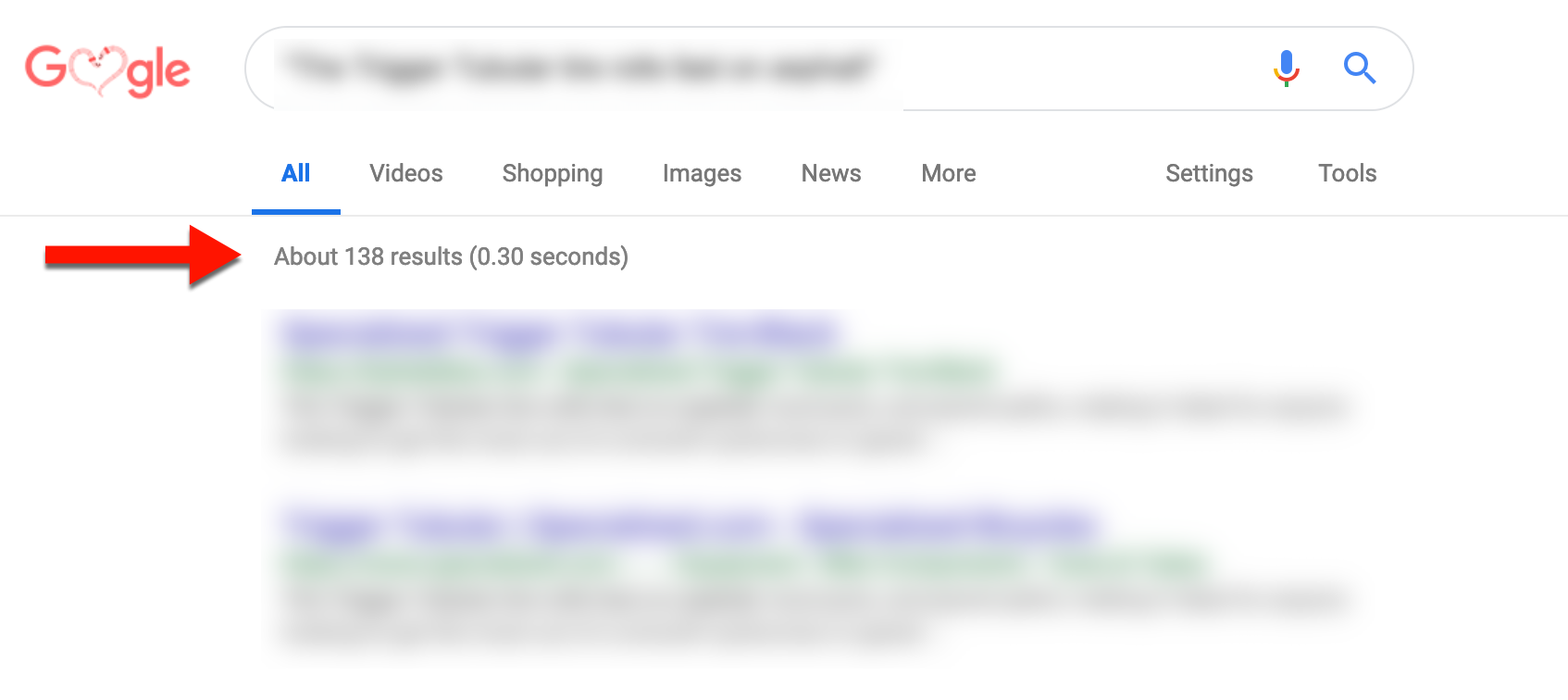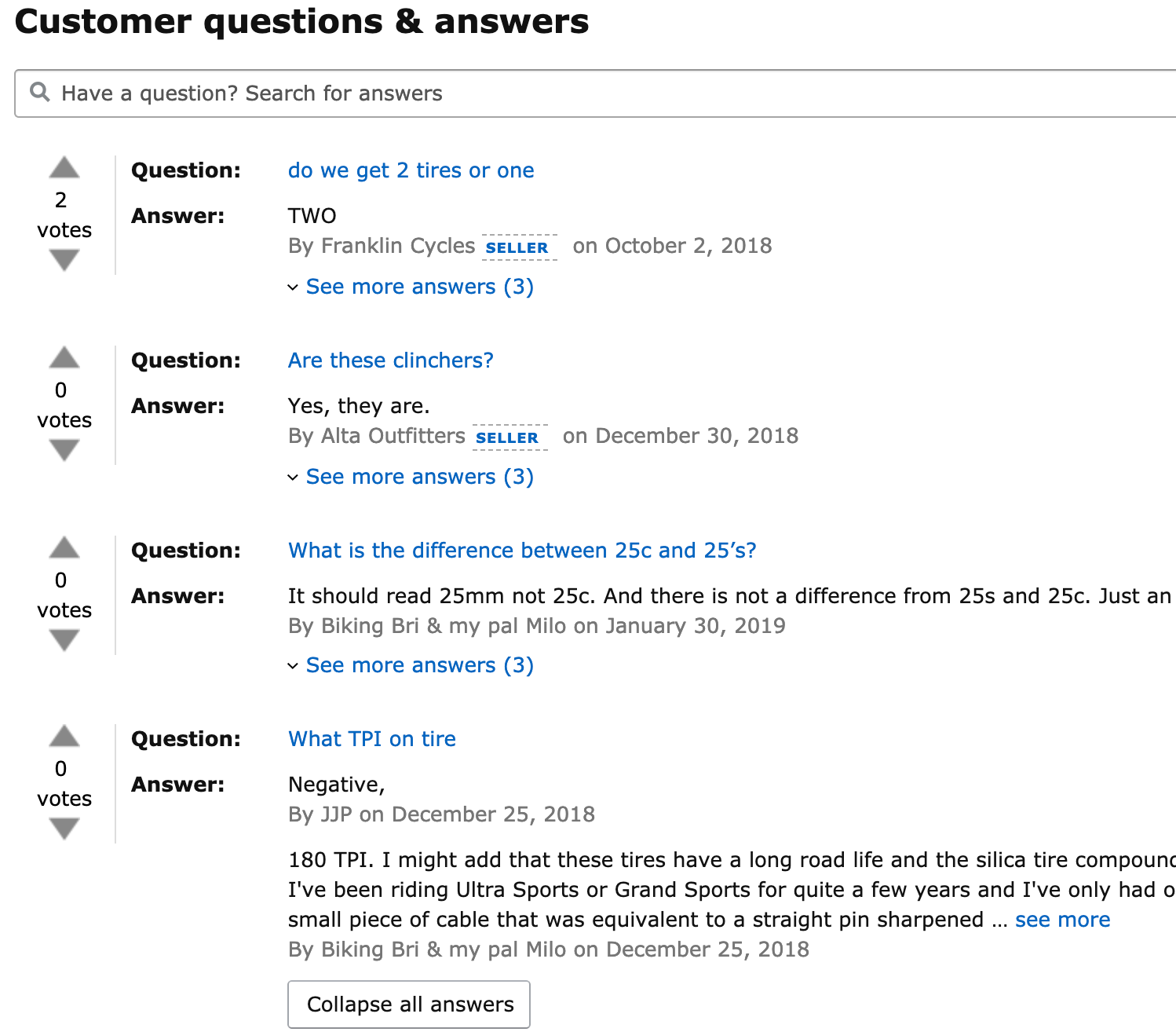How To Write A Great Product Description Page
Every web-browsing human being reads a product description, almost every day. Most product descriptions are eye-bleeding horrors of lousy copy and unclear information. That means some of the most-read digital content is some of the worst.
We can do better.
This is my sort-of-system for better product descriptions. Use as you see fit.
Two Kinds Of Descriptions
You’re writing two product descriptions:
- The SERP snippet, to improve rankings and generate clicks
- The product description page, to generate sales
Both impact rankings. But writing just for rankings will kill sales, and vice-versa. You have to find the right balance.
I beg of you, please don’t go and rewrite 10,000 product descriptions to the exact formula I outline here. It’s a starting point. Be creative.
The Product Description Page
This is the classic “product description.” Folks read it when they’re making their buying decision. They’re looking at two things that your writing can impact:
- Value
- Features
If UX is solid and the product is good, a great description will explain features and establish value so well that the customer clicks buy.
I focus on three elements of the product description page:
- The on-page title
- The blurb
- The bullets

The Product Description Page
The Product Description Page
If you don’t have bullets, may I suggest adding them?
There’s lots of other stuff: Images, call to action, price, for example. I’m not writing about those here. I know my limitations.
Check For Duplication
If you’re rewriting an existing description, check for duplication.
- Copy two sentences from the blurb
- Put them in quotes
- Paste them into Google
Do these sentences appear on other sites? That might be OK. But for SEO, duplicate content is a problem. Also, ask yourself: If your product description matches one or more other sites, what reason do folks have to buy from you, instead of them? If you can’t answer, you need to rewrite.

Gahhh! Duplicates. This is a problem.
Gahhh! Duplicates. This is a problem.
If you need to rewrite the description, don’t worry. Follow the rest of these recommendations, and it’ll happen naturally.
The On-Page Title
Note: Writing titles for Amazon is an entirely different discipline. Start with these recommendations, but you’ll need to include more product detail. It’s annoying, I know.
Your on-page product title starts as the product name:
Fast Roller TX 1000
But it must pass the Blank Sheet of Paper Test: The title, written on a blank sheet of paper, should make sense to a knowledgeable stranger. The Fast Roller is a road bicycle tire. Try this:
Fast Roller TX 1000 Road Bicycle Tire
That sounds like an SEO wrote it. When you’re wearing your SEO hat, though, you don’t write copy. You optimize it. Never optimize while you write.
I want something tighter. Remember, the blank sheet of paper test says a knowledgeable stranger. So this will work:
Fast Roller TX 1000 Road Tire
Maybe there are two TX 1000s, though: One for each valve type. Then I end up with:
Fast Roller TX 1000 Road Tire: Presta; and
Fast Roller TX 1000 Road Tire: Schrader
You want higher rankings, though, so you’re tempted to write a fifty-word title. Use your judgment. An overweight title won’t pass the blank sheet of paper test:
Fast Roller TX 1000 Road Bicycle Tire Flat Proof Presta 700C 150TPI Bike Rolling Thingie With A Valve And Tube And Stuff
The knowledgeable stranger will give up. Think before you start keyword stuffing.
The Blurb: Write An Appeal
Fill the blanks:
If [thing or need] then this is a perfect [product].
Example:
"If you [want puncture-resistance] then this is a perfect [road bike tire].”
That’s your appeal. It’s not the only way, but it’s a robust introduction.
You can combine multiple appeals:
“If you want puncture resistance and great handling, then this road bike tire is perfect.”
Or even:
“The TX 1000 provides puncture resistance without sacrificing weight, for a tire that delivers great handling and low rolling resistance.”
Again, I plead. I beg. I implore. Don’t use this as a formula.
The Blurb: Point Out Results
Something about this product makes it uniquely valuable. I hope.
Tell me how you outperform:
“In testing, the TX 1000 showed greater flat-resistance than all major competitors.”
Describe unique features. Get specific!!!
“The TX 1000 is the only tire with an unobtainium valve for greater durability and easier inflation.”
I won’t call this the USP because the term’s so overused it makes me ill.
The Blurb: Find The Unnoticed Obvious
Find one important unnoticed feature related to the appeal. For example threads per inch (TPI) affect a road cycling tire’s puncture-resistance and handling. If no competitors talk about TPI, we should:
“150 TPI means a supple, flat-resistant sidewall.”
Now, I have:
“If you want to balance puncture resistance and performance, then this is a perfect road bike tire. 150 TPI means a really supple, flat-resistant sidewall that doesn’t sacrifice handling or increase rolling resistance. The TX 1000 is also the only tire with an unobtanium valve for greater durability and easier inflation.”
Progress.
The Blurb: Remove Words That Should Never Be Spoken
Plague words. Ew. Additionally, really, indeed, obviously. Shudder. Dump them all.
I’ve got a whole list of plague words right here. If you use ’em, delete ’em.
“If you want puncture resistance, then this is a perfect road bike tire. 150 TPI means a really supple, flat-resistant sidewall that doesn’t sacrifice handling or increase rolling resistance. The TX 1000 is also the only tire with an unobtanium valve for greater durability and easier inflation.”
I also dislike overuse of unrivaled, unmatched, best, fantastic, or any other phrase that doesn’t apply to your product or your category of product. If you’re Rolex, maybe you can say unrivaled. If you sell shoelaces, stop it.
The Blurb: Remove The Breathless
Avoid the painfully obvious. Without bicycle tires, I get sparks and hemorrhoids. And only an idiot wants a tire that combines high rolling resistance with vulnerability to sharp objects. I get it.
Don’t tell me I’ll love this product, either. You’re already implying that. Saying it out loud seems needy and pushes me away.
“In cycling, tires are important. Performance and flat resistance matter. If you want to balance puncture resistance and performance, then this is a perfect road bike tire. 150 TPI means a really supple, flat-resistant sidewall that doesn’t sacrifice handling or increase rolling resistance. The TX 1000 is also the only tire with an unobtanium valve for greater durability and easier inflation. You’ll love this tire!”
I know I need a bicycle tire. Tell me why I need this bicycle tire.
The Blurb, Resplendent
Here’s what we’ve got:
“If you want to balance puncture resistance and performance, then this is a perfect road bike tire. 150 TPI means a supple, flat-resistant sidewall that doesn’t sacrifice handling or increase rolling resistance. The TX 1000 is also the only tire with an unobtanium valve for greater durability and easier inflation.”
On to the bullets.
The Bullets: Find The Questions (And Answer Them)
Bullets are punchy little bits of information. Readers scan for them. Use them to dispel concerns and answer questions. Finding good bullet content is easy:
Go to Amazon.com. Search for your product, or a relevant one. Scroll down to “questions.”

Answers to questions make great bullets
Answers to questions make great bullets
If there are any, find the five most-read and most-asked. Write a brief response to each one. Keep those answers handy.
Do the same on other sites: Walmart, Jet, and vertical-specific sellers all have “questions” sections.
Those will become bullets in your product description. You might even repeat items from the blurb, like “150 TPI.” Use your judgment.
I found many questions about tire weight, tube versus tubeless, and sidewall color. So my bullets could be:
- 10 grams (a guy can wish)
- Requires a tube
- Black sidewalls
You can skip bullets if you want. Maybe you don’t need them. That’s fine. I mean, who needs to answer all those pesky customer questions, right? That’s my over annoying parental way of saying you need bullets. Bribe the developer. Get the branding team drunk and ask for written approval. Whatever you have to do.
Destroy the FAQ
The FAQ is where copywriters go to die. If there are frequently asked questions about a product, write brief answers for those, too. Add them to your bullets, or the product description. Or add a separate section for related FAQ.
If you’re reselling someone else’s product, look at the manufacturer’s FAQ.
Those can become more bullets or part of the blurb.
Everyone wants to know if we guarantee this tire. We provided this answer, so I turned it into a bullet:
- 10 grams (a guy can wish)
- Requires a tube
- Black sidewalls
- Guaranteed rim fit and flat resistance against normal debris. No rampaging hippos
What About…?
Product specifications? Your call. I don’t think you need specs for a capybara plushie. You might if you sell roofing shingles.
Product ingredients? I like to put them after the bullets, but it depends on the product. A bag of popsicle sticks doesn’t need a list of ingredients. I hope.
Just Get To The SEO, Ian
If you did all of the above, you’ve got an optimized product description page. If you want to take it further:
- Make sure you don’t avoid your keyword. You sell bicycle tires, not inflatable wheel support.
- Start with the important stuff. Ingredients rarely belong in the first paragraph. Your appeal does.
- Do some smart internal linking.
And, you need to work on your SERP snippet:
The SERP Snippet
The product description page is your pitch. The snippet is about search visibility and clickthru.
I’m going to focus on the title element and meta description. They’re usually the bulk of the snippet:

Title element and meta description tag, in a SERP
Title element and meta description tag, in a SERP
It may include reviews and other bits, too. That’ll be another post.
The Title Element
If you don’t know what a title element/tag (same thing, different names) is, here’s a primer.
First, follow the Blank Sheet Of Paper Test. I like to start with the product description page title:
Fast Roller TX 1000 Road Tire: Presta
But I probably need to include “bike” or “bicycle” to separate me from motorcycles and cars:
Fast Roller TX 1000 Road Bicycle Tire: Presta
Now, use a keyword research tool like Moz, SEMRush or Merchantwords to find the most-researched product features. I found these:
- Flat-resistant bicycle tires
- Fast bicycle tires
- Bicycle tires weight
- Road tire vs. mountain bike tire
I also found a lot of folks search for quantitative features:
- Size (700c)
- Inflation pressure (110psi)
I might add these to my description:
Fast Roller TX 1000 Road Bicycle Tire – Presta – 700c – 110psi
Remember to check the current maximum title element length. We have a nifty SERP preview tool that can help.
Turns out my title is too long, so I have to get ruthless. I remove the less-important feature:
Fast Roller TX 1000 Road Bicycle Tire – Presta – 700c – 110psi
OK. Title complete.
The Meta Description
If you’re not sure what a meta description tag is, read this.
The meta description has zero direct impact on rankings. It does, however, impact clickthru. These are a few things I try to do:
First: Include the features for which you believe people will search. Those get bolded. Their presence will reinforce that this is the right product. If someone searches for “rolling resistance,” “presta,” and “schrader,” and I have that word in my meta description, the search snippet will look like this:

A SERP snippet with bolded words
A SERP snippet with bolded words
The searcher is more likely to click.
Second: Use the highest-performing ad text. A few years ago, Wil Reynolds made this recommendation. It blew my mind: Use the highest-performing PPC ad text as your description tag. You’ve already tested that text. You know it gets high clickthru from a SERP. Blew. My. Mind.
I don’t recommend doing this for the on-page, visible product description. Ad text is optimized for search results, not a product page.
Finally: If it’s relevant, include differentiators: Shipping time, available colors/sizes, genuine original, etc. Anything that matters to your audience. On the other hand, don’t tell me you have genuine original socks. I care exactly not at all.
Try to use all available characters. As I write this, the accepted maximum is 300 characters. It changes all the time. Do your research.
Done! Or Not.
You’ve written a great product description page. You’ve got a great SERP snippet. Nice!
Keep an eye on page performance. Look at clickthru rates. Revise. Keep trying to beat previous performance.
Writing descriptions can be tedious, but it’s a solid conversion win with SEO implications. Done right, it can strengthen your brand.
What’s not to like?
Questions? Comments?
Ask me questions in the comments, or hit me up on Twitter or LinkedIn.
Just please, don’t ask me how many times to repeat a keyword.
The post How To Write A Great Product Description Page appeared first on Portent.





